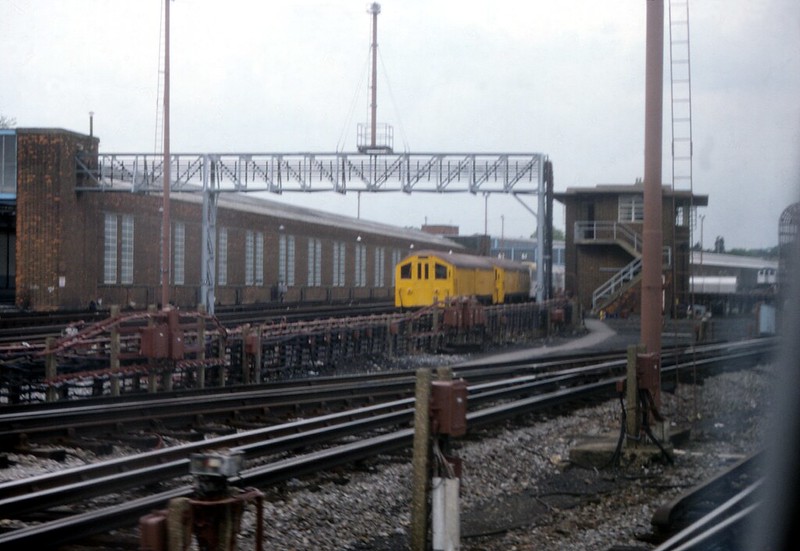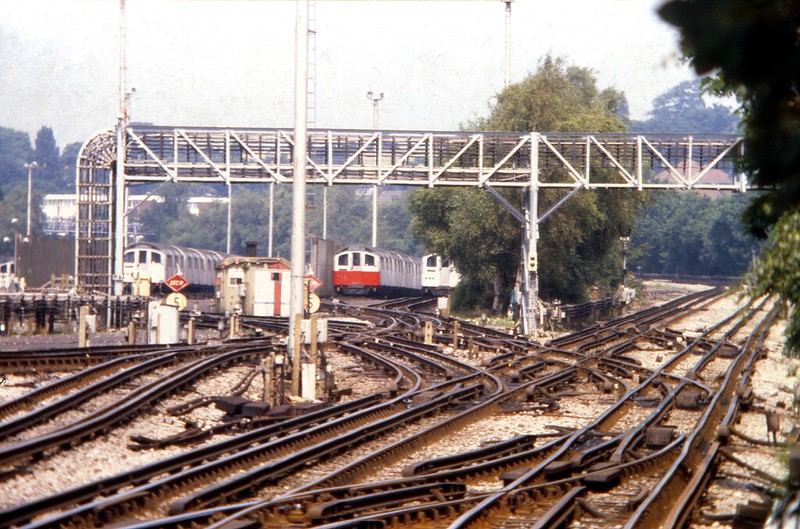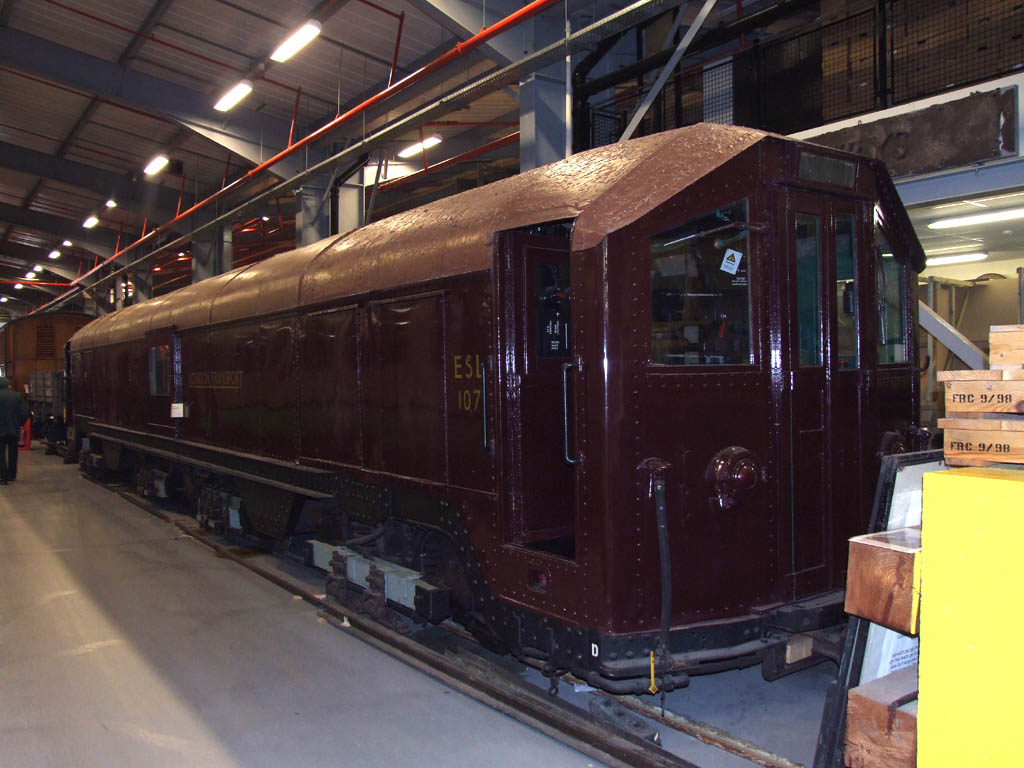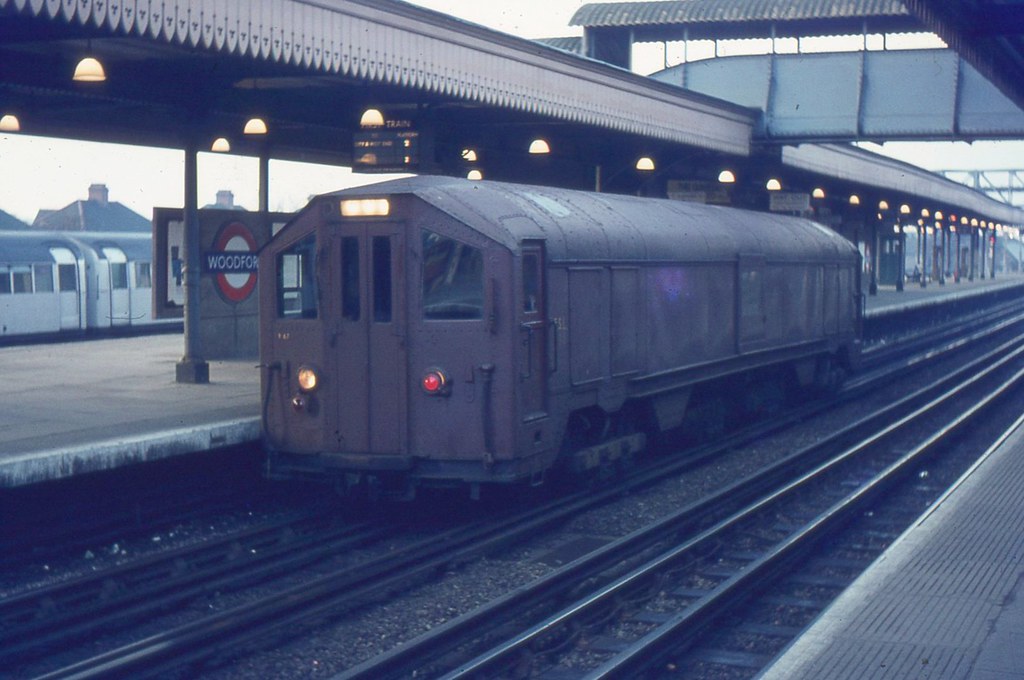Deleted
Deleted Member
Posts: 0
|
Post by Deleted on Feb 1, 2017 20:36:53 GMT
|
|
Dom K
Global Moderator
The future is bright
Posts: 1,831 
|
Post by Dom K on Feb 1, 2017 20:38:33 GMT
Nothing comes up when I click the link Mod hat on. Can you make your thread title more specific as it's not obvious in the slightest and even less so as I can't see the link.
Thanks |
|
Deleted
Deleted Member
Posts: 0
|
Post by Deleted on Feb 1, 2017 20:40:53 GMT
I know, I'm trying to work out why, not only can't I link to the photo I can't seem link to the guys page either. Odd. I suspect it might be because he sells photos, so he has disabled linking and photo URL copying. Bear with me.
|
|
Deleted
Deleted Member
Posts: 0
|
Post by Deleted on Feb 1, 2017 20:48:05 GMT
Okay, it should be visible now.
|
|
Dom K
Global Moderator
The future is bright
Posts: 1,831 
|
Post by Dom K on Feb 1, 2017 20:53:12 GMT
Okay, it should be visible now. |
|
Deleted
Deleted Member
Posts: 0
|
Post by Deleted on Feb 1, 2017 20:56:42 GMT
Ok, wilco! Thanks...and of course "rolling" stock it isn't anymore, I didn't think of that. Photo taken in the 80s.
|
|
|
|
Post by superteacher on Feb 1, 2017 21:00:49 GMT
It looks like an old Standard stock train, maybe one used for engineering purposes?
|
|
|
|
Post by MoreToJack on Feb 1, 2017 21:01:23 GMT
|
|
Deleted
Deleted Member
Posts: 0
|
Post by Deleted on Feb 1, 2017 21:12:53 GMT
Thanks.
|
|
|
|
Post by norbitonflyer on Feb 1, 2017 23:16:52 GMT
It looks like an old Standard stock train, maybe one used for engineering purposes? Not standard stock - that is one of the original 1903 cars that worked the line until conversion to LU standards in the 1940s. Several were converted to sleet locomotives (de-icing, essentially) after the Standard Stock arrived on the Central. |
|
|
|
Post by steeevooo on Feb 2, 2017 10:02:58 GMT
Indeed, and the first comment to the photo (8 years ago) on the link provided even states as much:
"Triumph Owners Motorcycle Club Ilford Branch 8y
The picture is of Hainault Depot, Trains are 1962 Stock and the Sleet Loco."
|
|
|
|
Post by spsmiler on Feb 2, 2017 14:39:14 GMT
It just so happens that our present wet wintry weather spurred me into getting out the scanner instead of my camera. These three views showing trains at Hainault depot were photograhed with a 35mm SLR camera and Kodachrome film. Two would have been taken using a 135mm telephoto lens, the other one was from a moving train between Hainault and Grange Hill stations.  1962-1960-SleetLoco-HainaultDepot 1962-1960-SleetLoco-HainaultDepot1960 and 1962 tube stock and a sleet locomotive at Hainault depot.  Sleet-Locos-Hainault-Depot Sleet-Locos-Hainault-Depot 1962-Including-RedFront-HainaultDepot 1962-Including-RedFront-HainaultDepot1962 Tube Stock trains at Hainault depot, including the sole example from this fleet which was painted red on the lower part of the cab fronts (both driving motors - DM - in the one four-car unit). |
|
|
|
Post by brigham on Feb 2, 2017 16:23:07 GMT
So, essentially, examples of the original CLR multiple stock of 1904 were still in existence EIGHTY years later, and then were scrapped.
Brilliant.
|
|
|
|
Post by whistlekiller2000 on Feb 2, 2017 16:36:14 GMT
So, essentially, examples of the original CLR multiple stock of 1904 were still in existence EIGHTY years later, and then were scrapped. Brilliant. You can see the preserved one in the Acton Museum.  Picture from "Transport Limited"  |
|
Deleted
Deleted Member
Posts: 0
|
Post by Deleted on Feb 2, 2017 16:52:57 GMT
Indeed, and the first comment to the photo (8 years ago) on the link provided even states as much:
"Triumph Owners Motorcycle Club Ilford Branch 8y
The picture is of Hainault Depot, Trains are 1962 Stock and the Sleet Loco."
Oh right, I didn't notice a comments field for the photos. |
|
|
|
Post by countryman on Feb 2, 2017 17:14:33 GMT
|
|
|
|
Post by brigham on Feb 2, 2017 17:20:23 GMT
You can see a preserved example of the de-icing machine that LT built from withdrawn CLR 1904 stock.
Where can you see an example of the actual stock?
Nowhere, I suspect. One or more could have been re-created from surviving Departmental stock such as seen above, had anybody been so far-sighted to have thought such a thing worth preserving.
What were people thinking of? It isn't as if railway preservation was in its infancy in the 1980s.
|
|
|
|
Post by whistlekiller2000 on Feb 2, 2017 22:03:36 GMT
It isn't as if railway preservation was in its infancy in the 1980s. 1980s? As far as I can tell from my reading, some of the old CLR stock was converted to Sleet Locomotives and the rest scrapped in the early 1940s. A rather more pressing world war may have had something to do with the unenlightened thinking about old tube train preservation during that period of history. A replica could still be built today (as it could have been in the 80s) from the remaining unit(s) but I doubt the funds are available for such a project and it'd still be just a replica. |
|
rincew1nd
Administrator
Junior Under-wizzard of quiz
Posts: 10,286 
|
Post by rincew1nd on Feb 2, 2017 22:13:21 GMT
As an officer of the Talyllyn Railway Company, I feel duty-bound to point out that the Talyllyn Railway Preservation Society was founded in 1950 and in May 1951 operated the world's first preserved railway; standard gauge preserved railways only started operating almost ten years later. Bank on topic we have a sleet loco preserved in the LT Museum depot at Acton and the Spa Valley has the T Stock cars. Much better than nothing! |
|
neilw
now that's what I call a garden railway
Posts: 284
|
Post by neilw on Feb 3, 2017 8:11:19 GMT
Yes, coupling would be possible and would work |
|
|
|
Post by brigham on Feb 3, 2017 8:59:18 GMT
It isn't as if railway preservation was in its infancy in the 1980s. 1980s? As far as I can tell from my reading, some of the old CLR stock was converted to Sleet Locomotives and the rest scrapped in the early 1940s. A rather more pressing world war may have had something to do with the unenlightened thinking about old tube train preservation during that period of history. A replica could still be built today (as it could have been in the 80s) from the remaining unit(s) but I doubt the funds are available for such a project and it'd still be just a replica. My understanding is that at least ELEVEN of these machines were still in existence in 1980, and each one consisted of the greater part of two CLR driving motors of 1904 stock. These units formed the first multiple-unit trains on the CLR, and possibly on any tube railway anywhere. Having survived the War, they were broken-up during the 1980s, at a time when railway preservation was well established. One was preserved as an example of the Sleet Locomotive in its own right, and nobody saw the opportunity to retain even ONE of the others to form the basis of a restored CLR motor. This was short-sighted and unforgiveable. Many ancient and historic items of railway history have been salvaged from far less original material than was available here. An opportunity was lost. |
|
|
|
Post by norbitonflyer on Feb 3, 2017 10:09:50 GMT
and each one consisted of the greater part of two CLR driving motors of 1904 stock. These units formed the first multiple-unit trains on the CLR, and possibly on any tube railway anywhere. Depends whether you count the Waterloo & City Line, which had a primitive form of multiple unit operation from the start, with traction current (rather than merely control signals) fed to the rear motor coach from the driver's controls. The CLR stock beat the GN&C "Big Tube" stock into service by a few months. None of them survived in their original gate-ended form beyond the 1920s, when they were converted to air door operation. It would not be possible to rebuild a car now from authentic components as the sleet locomotives were made up of the motor ends of two separate cars - all the trailing (passenger) ends were scrapped in the 1940s and probably ended up as munitions. Preserving a sleet loco in its final form is more authentic then cutting it apart to create a replica of the stock in its original form. "Gate" stock is represented in the collection by the "padded cell" GN&C car. |
|
|
|
Post by whistlekiller2000 on Feb 3, 2017 10:16:41 GMT
and each one consisted of the greater part of two CLR driving motors of 1904 stock. These units formed the first multiple-unit trains on the CLR, and possibly on any tube railway anywhere. Depends whether you count the Waterloo & City Line, which had a primitive form of multiple unit operation from the start, with traction current (rather than merely control signals) fed to the rear motor coach from the driver's controls. The CLR stock beat the GN&C "Big Tube" stock into service by a few months. None of them survived in their original gate-ended form beyond the 1920s, when they were converted to air door operation. It would not be possible to rebuild a car now from authentic components as the sleet locomotives were made up of the motor ends of two separate cars - all the trailing (passenger) ends were scrapped in the 1940s and probably ended up as munitions. Preserving a sleet loco in its final form is more authentic then cutting it apart to create a replica of the stock in its original form. "Gate" stock is represented in the collection by the "padded cell" GN&C car. That was my understanding as well. The former CLR units scrapped in the 80s were all sleet locomotives. In other words they had nothing different to preserve in the eighties than what resides in the LT Museum now. |
|
|
|
Post by brigham on Feb 3, 2017 12:54:55 GMT
Incorrect.
They had somewhere in the region of twenty partial car bodies and frames from the original CLR motor stock, over and above the one they preserved as a sleet locomotive.
All these were scrapped. The same mentality would have seen us without many of today's most precious railway relics, reaching back to Hackworth and beyond.
|
|
|
|
Post by norbitonflyer on Feb 3, 2017 13:37:55 GMT
Incorrect. They had somewhere in the region of twenty partial car bodies and frames from the original CLR motor stock, over and above the one they preserved as a sleet locomotive. . Sorry, could you clarify? Where were these 20 bodies and frames stored, and when were they eventually scrapped? You refer to "one preserved as a sleet locomotive". It is in fact just one of a fleet originally numbering eighteen, converted between 1938 and 1941. Each locomotive used the cabs and motor compartments of two donor cars, with a new central section for the deicing gear, supported by two bogies apparently salvaged from tramcars. .   How much of the electrical gear is orgnal is debatable, as the had to be converted from the CLR's 3-rail system to the LU standard 4-rail system Although forty cars had originally been set aside for this purpose, the fate of the four surplus cars was probably the same as that of the passengers sections of the cars that were converted. There was a war on at the time after all. With railings, saucepans, and even some railway lines, being collected for salvage to provide feedstock for the munitions industry, the likely fate of a fleet of redundant rolling stock is easy to imagine. Even if any cars had survived the war without being scrapped or converted into sleet locomotives, given the shocking state into which the Standard stock fell during the long years of storage pending the Central Line extensions, the idea that there were the resources to prevent the redundant 1904 stock rotting away seems a little far-fetched, even if there had been space to store it. |
|
|
|
Post by whistlekiller2000 on Feb 3, 2017 14:03:38 GMT
Incorrect. They had somewhere in the region of twenty partial car bodies and frames from the original CLR motor stock, over and above the one they preserved as a sleet locomotive. All these were scrapped. The same mentality would have seen us without many of today's most precious railway relics, reaching back to Hackworth and beyond. This may help you understand what we've been trying to explain. The table below shows the extent of the sleet locomotives constructed from ex-CLR stock in 1939. As you can see, there were 18 of them (in the region of 20 as you mention and where I think your confusion stems from) utilizing 36 motored cab ends cut and shut with new sections inserted between to take the maintenance equipment, not just one as you allude to. I'm interested in your source about remains of other units as I can find no evidence to support that claim. I'll be quite happy to stand corrected if you could provide such. The remaining 17 sleet locomotive conversions were indeed scrapped by the mid 80s but they were as shown below, not in their original CLR operating condition, so what is preserved in museum is representative of all that remained in the 80s. There was nothing else left to preserve. List of Sleet Locomotives constructed from ex-CLR stock. Edited to include table of scrapping dates: Edited to include table of scrapping dates: Source: Bruce, J. Graeme (1987). Workhorses of the London Underground. Capital Transport Publishing. ISBN 0-904711-87-0. |
|
Deleted
Deleted Member
Posts: 0
|
Post by Deleted on Feb 3, 2017 17:41:23 GMT
Bank on topic we have a sleet loco preserved in the LT Museum depot at Acton and the Spa Valley has the T Stock cars. Much better than nothing! I thought the ones from spa valley went to the Buckinghamshire railway centre? Or am I getting confused with something else. |
|
|
|
Post by ted672 on Feb 3, 2017 19:32:40 GMT
Incorrect. They had somewhere in the region of twenty partial car bodies and frames from the original CLR motor stock, over and above the one they preserved as a sleet locomotive. All these were scrapped. The same mentality would have seen us without many of today's most precious railway relics, reaching back to Hackworth and beyond. My first post, in at the deep end, so pardon me if I'm a bit off topic! On the subject of missed opportunities, I recall a photo from a depot open day, possibly Neasden 1963, which showed some venerable tube stock in use as an engineering training set-up. I don't recall the caption and I'm not sure if it was CLR stock, but it's a great shame nothing from it was saved. |
|
|
|
Post by norbitonflyer on Feb 3, 2017 22:11:48 GMT
, I recall a photo from a depot open day, possibly Neasden 1963, which showed some venerable tube stock in use as an engineering training set-up. I don't recall the caption and I'm not sure if it was CLR stock, but it's a great shame nothing from it was saved. Probably Standard Stock from the 1920s or 1930s if it was as late as 1963. There was plenty of that knocking about in the early sixties, recently displaced by 1959/62 stock on the Picadilly and Central lines. Some cars were converted for use with 1960 stock and on the Isle of Wight, and one or two have been preserved. |
|
DWS
every second count's
Posts: 2,487
|
Post by DWS on Feb 3, 2017 23:47:03 GMT
Bank on topic we have a sleet loco preserved in the LT Museum depot at Acton and the Spa Valley has the T Stock cars. Much better than nothing! I thought the ones from spa valley went to the Buckinghamshire railway centre? Or am I getting confused with something else. No your not getting confused the T stock are no longer at the Spa Valley Railway. |
|



